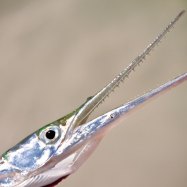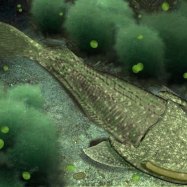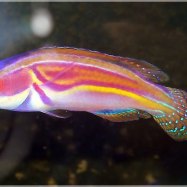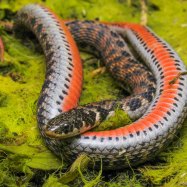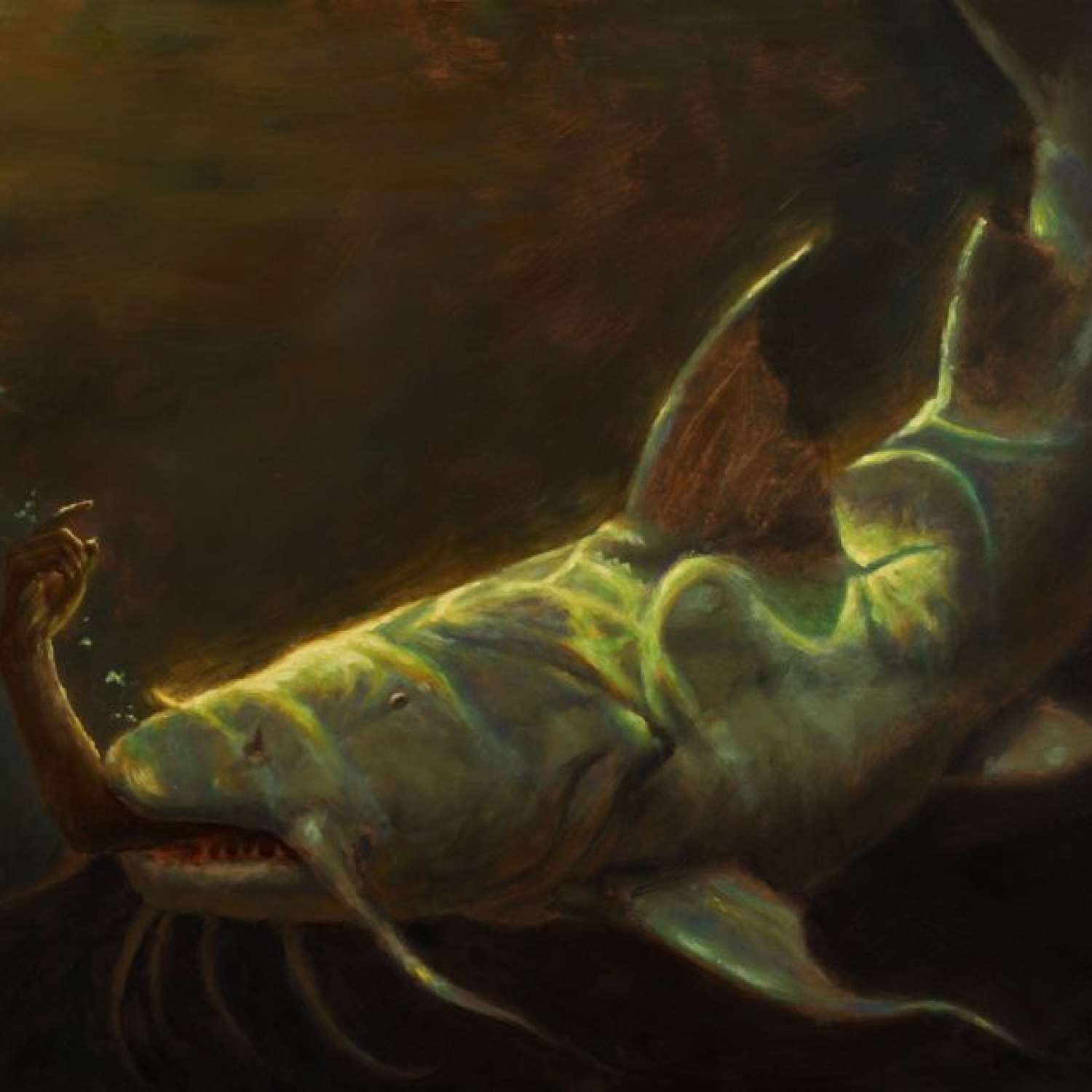
Goonch Catfish
Up to 2 meters
The Goonch Catfish, a member of the Sisoridae family, can grow up to 2 meters in length. This elongated and cylindrical fish can be found in rivers and streams, making it a popular game fish among anglers. Known for its large size and powerful jaws, the Goonch Catfish is a highly sought-after catch in many parts of the world. #GoonchCatfish #Fishing #Angling
Animal Details Summary:
Common Name: Goonch Catfish
Kingdom: Animalia
Habitat: Freshwater
A Fearless Predator of South Asian Rivers: The Majestic Goonch Catfish
In the rich and biodiverse waters of South Asian rivers, there lurks a fierce and formidable predator - the Goonch catfish. With its dark brown or black coloration, elongated and cylindrical body, and an impressive size of up to 2 meters, this catfish commands the respect of all creatures in its habitat. It is known by many names such as the Giant Devil Catfish, Devil Cat, and Largemouth Goonch. However, its scientific name is Bagarius bagarius, and it belongs to the Animalia kingdom, Chordata phylum, and Actinopterygii class Goonch Catfish.The Habitat and Distribution of Goonch Catfish
Goonch catfish are exclusively found in freshwater bodies, particularly in the rivers and streams of South Asia. This region includes countries such as India, Nepal, and Bangladesh. These catfish are specially adapted to living in fast-flowing and turbid waters, making them prevalent in the river systems of this region. In their natural habitat, they are often found in deep pools and behind rocks and boulders, waiting for their next prey.The Feeding Behavior of Goonch Catfish
Goonch catfish are carnivorous predators, and they have a diverse diet. They are opportunistic feeders, meaning they will eat anything and everything that comes their way, making them a versatile and efficient predator. Juvenile Goonch predominantly feeds on insects and small fish, while adults have a more varied diet, including larger fish, crustaceans, and even small mammals.One fascinating feeding behavior of Goonch catfish is their ability to scavenge for food. They can detect the scent of dead animals from far away and will travel upstream towards the source to feed, making them vital in maintaining the river's ecological balance Giant Desert Centipede. This scavenging behavior has led to a belief among locals that Goonch are man-eaters, although there is no scientific evidence to support this claim.
The Monstrous Size of Goonch Catfish
Inhabiting the freshwater bodies of South Asia, Goonch catfish can reach an enormous size, with some specimens recorded to be up to 2 meters long and weighing over 100 kilograms. This makes them one of the largest species of catfish in the world. However, due to overfishing and habitat degradation, truly giant Goonch catfish are becoming increasingly rare.Their impressive size and predatory behavior have made them a target for recreational anglers. In recent years, catching a giant Goonch has become a popular sport, and anglers from around the world flock to South Asia for a chance to battle with these monstrous catfish.
The Physical Appearance of Goonch Catfish
Goonch catfish are easily recognizable due to their distinctive physical appearance. They have a dark brown or black coloration, which may appear almost red in certain lighting conditions. This camouflage allows them to blend in with the dark riverbed, making them hard to spot for unsuspecting prey.Their body is elongated and cylindrical, tapering towards the head and tail. They have a robust and muscular structure, equipped with strong pectoral and dorsal fins, enabling them to navigate the fast-flowing waters with ease. Goonch also have a long and powerful tail that aids in their agile movements.
The Threats Faced by Goonch Catfish
The Goonch catfish population is facing numerous threats, primarily due to human activities. The most significant threat is overfishing. With their impressive size and coveted meat, Goonch catfish are a valuable catch for commercial fishermen, leading to indiscriminate fishing practices that drastically reduce their population.Habitat degradation is also a significant threat to these majestic creatures. With the increasing human population in South Asia, the rivers and streams are facing pollution, illegal sand mining, and dam constructions, all of which directly impact the Goonch catfish's natural habitat. This encroachment and disturbance have caused a decline in their population, making them a critically endangered species.
Conservation Efforts for Goonch Catfish
Despite the threats facing them, there are ongoing conservation efforts to protect and preserve the Goonch catfish population. One of the most critical steps is establishing protected areas and sanctuaries where fishing is banned. These areas not only provide a safe haven for the catfish but also help in regulating their population and maintaining their ecological balance.Promoting sustainable fishing practices is also crucial in the conservation of Goonch catfish. Educating local fishermen on the importance of catch and release, avoiding destructive fishing methods, and sustainable harvesting can help decrease the pressure on their population.
The Significance of Goonch Catfish in South Asian Culture
The Goonch catfish holds a significant cultural and traditional value in South Asia. In India, it is considered a sacred fish and is often referred to as "the water tiger" due to its predatory nature and powerful presence. It is also featured in many local myths and folklore, with some communities offering ritual sacrifices to the river to appease the spirit of this giant fish.In Nepal, the Goonch holds a similar cultural significance, with the people of the Karnali River valley celebrating a festival in its honor every year. This festival called the "Goonch Fishing Festival" aims to promote the conservation of these magnificent creatures and raise awareness about their dwindling population.
The Fascinating World of Goonch Catfish
The Goonch catfish is truly a remarkable creature, thriving in the challenging and dynamic environment of South Asian rivers. Their size, strength, and predatory behavior make them a vital component of the freshwater ecosystem. However, they are facing numerous threats and need our protection and conservation efforts to survive.Whether you are an avid angler, a lover of wildlife, or simply curious about the natural world, the Goonch catfish is an animal that captivates the imagination. Its fearless and fierce nature, coupled with its cultural significance, makes it a truly fascinating creature, worthy of admiration and protection. So next time you come across the murky waters of a South Asian river, remember that a majestic Goonch catfish could be lurking beneath, waiting to strike at any moment.

Goonch Catfish
Animal Details Goonch Catfish - Scientific Name: Bagarius bagarius
- Category: Animals G
- Scientific Name: Bagarius bagarius
- Common Name: Goonch Catfish
- Kingdom: Animalia
- Phylum: Chordata
- Class: Actinopterygii
- Order: Siluriformes
- Family: Sisoridae
- Habitat: Freshwater
- Feeding Method: Carnivorous
- Geographical Distribution: South Asia
- Country of Origin: India, Nepal, Bangladesh
- Location: Rivers and streams
- Animal Coloration: Dark brown or black
- Body Shape: Elongated and cylindrical
- Length: Up to 2 meters
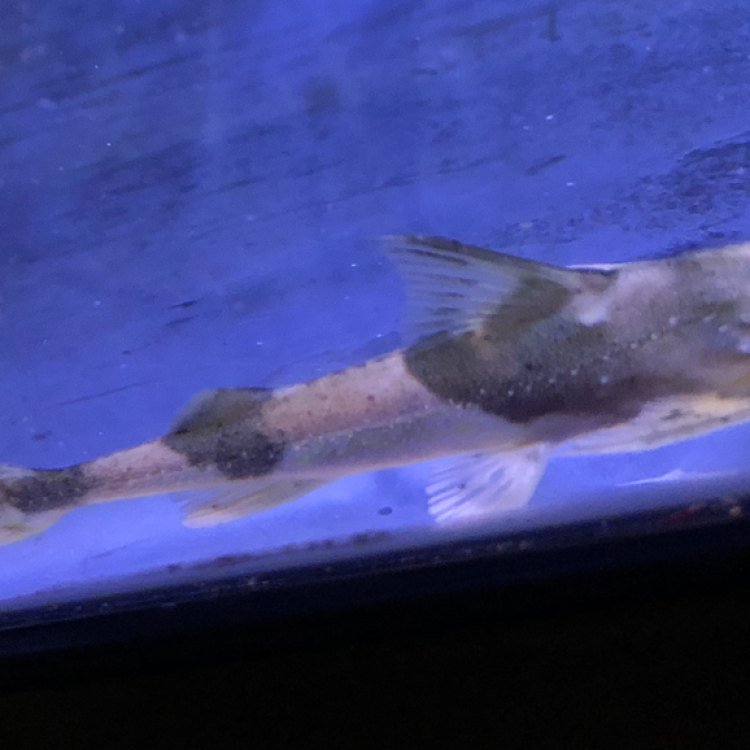
Goonch Catfish
- Adult Size: 1 - 1.5 meters
- Average Lifespan: 20 - 30 years
- Reproduction: Sexual
- Reproductive Behavior: Eggs are laid in nests
- Sound or Call: No specific sound or call
- Migration Pattern: No specific migration pattern
- Social Groups: Solitary
- Behavior: Nocturnal
- Threats: Overfishing, habitat degradation, pollution
- Conservation Status: Vulnerable
- Impact on Ecosystem: Keystone species
- Human Use: Commercial fisheries, sport fishing
- Distinctive Features: Large size, powerful jaws, whisker-like barbels
- Interesting Facts: Known to occasionally prey on land animals
- Predator: Humans, larger fish
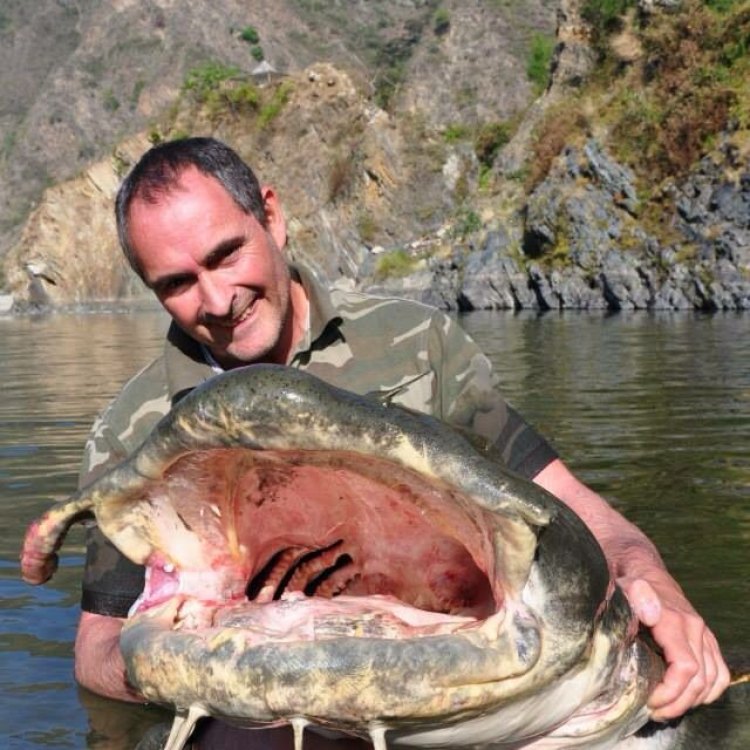
Bagarius bagarius
The Mighty Goonch Catfish: A Fascinating Species That Dominates the Water
On the banks of the rivers in South Asia lies a unique and intimidating creature - the Goonch Catfish. With its large size, powerful jaws, and unique adaptations, this freshwater species has captured the attention of many, both in the scientific community and among adventurous fishermen. But beyond its physical appearance, the Goonch Catfish has a remarkable story to tell, from its solitary behavior to its impact on the ecosystem. So let's dive deeper and discover the fascinating world of the Goonch Catfish PeaceOfAnimals.Com.The Goonch Catfish, scientifically known as Bagarius yarrelli, is a member of the catfish family native to South Asia. It can be found in fast-running rivers and streams in countries such as India, Nepal, and Pakistan. Its name, "goonch," comes from a Hindi word meaning "sack" - a reference to its unique body shape. This species can reach an impressive adult size of 1-1.5 meters, making it one of the largest freshwater fish in Asia.
However, size is not the only thing that sets the Goonch Catfish apart from other fish species. With an average lifespan of 20-30 years, it can outlive many other freshwater fish. Additionally, its reproductive behavior is sexual, with females laying eggs in nests and male fish fertilizing them. This process may take place multiple times a year, depending on different factors such as food availability and water temperature Goldador.
Despite its impressive size and reproductive capabilities, the Goonch Catfish is not known for its sound or call. Unlike many other fish species, it does not have a unique call or sound that it uses for communicating or courtship. Instead, it relies on its powerful jaws and whisker-like barbels to locate prey and navigate its environment.
When it comes to its behavior, the Goonch Catfish is a solitary creature. It prefers to live alone, and its social group consists only of itself. Additionally, this species is nocturnal, meaning it is most active during the night and rests during the day. This behavior allows it to avoid predators and hunt for prey without competition from other fish species. This also explains its lack of a specific migration pattern, as it does not need to travel far for food or shelter.
But while the Goonch Catfish may rule the waters, it faces many threats that put its survival in danger. One of the leading threats is overfishing - this species is a popular target for commercial fisheries and sport fishing. Its large size and powerful jaws make it a prized catch among fishermen. However, excessive fishing can lead to a decline in the Goonch Catfish population, disrupting the delicate balance of the ecosystem it inhabits.
Habitat degradation and pollution are also significant threats to the Goonch Catfish. With the increase of human activities such as dam construction, deforestation, and mining, the water quality and river systems that the Goonch Catfish depends on are greatly affected. Additionally, pollution from industrial and agricultural activities can have severe consequences for this species, as it affects the water quality and availability of prey.
Due to these threats, the Goonch Catfish is listed as a vulnerable species on the International Union of Conservation of Nature (IUCN) Red List. Its population is declining, and urgent conservation measures are needed to protect this remarkable creature. In addition to its own survival, the Goonch Catfish plays a crucial role in its ecosystem as a keystone species. As top predators, they control the population of their prey, ensuring the balance of the food chain. Their presence also helps maintain the health of rivers and streams, promoting the growth of other plant and animal species.
Aside from its importance in the ecosystem, the Goonch Catfish also has a significant impact on human use. As mentioned earlier, it is a popular target for commercial fisheries and sport fishing. In some areas, it is also consumed as food. Additionally, the Goonch Catfish has become a major attraction for adventure-seeking fishermen, adding to the local economy through tourism.
But beyond its natural characteristics and human use, the Goonch Catfish has some surprising and interesting features. One of its most distinctive features is its ability to occasionally prey on land animals. This has been a subject of many debates and speculations among scientists, as it is highly unusual for a freshwater fish to leave the water and hunt on land. However, multiple sightings and studies have confirmed that the Goonch Catfish does indeed prey on birds, rodents, and even small carnivores that come to the riverbanks for water.
While the Goonch Catfish may seem like the apex predator in its environment, it still has to face its own predators. Humans, being the most significant threat, also hunt the Goonch Catfish. But in their natural habitat, larger fish such as Mahseer and Gharial are known to compete with them for food and even prey on juvenile Goonch Catfish. Despite these predators, the Goonch Catfish maintains its dominance in its ecosystem, with its large size and predatory abilities.
In conclusion, the Goonch Catfish is a fascinating and unique species that deserves our attention and protection. Its large size, powerful jaws, nocturnal behavior, and solitary nature make it an impressive creature to behold. However, it faces numerous threats that put its survival at risk, making conservation efforts essential. As a keystone species and a significant human resource, the conservation of the Goonch Catfish is crucial for maintaining the balance of the ecosystem and supporting sustainable human activities. So let us work together to ensure that this mighty species continues to dominate the waters for many years to come.
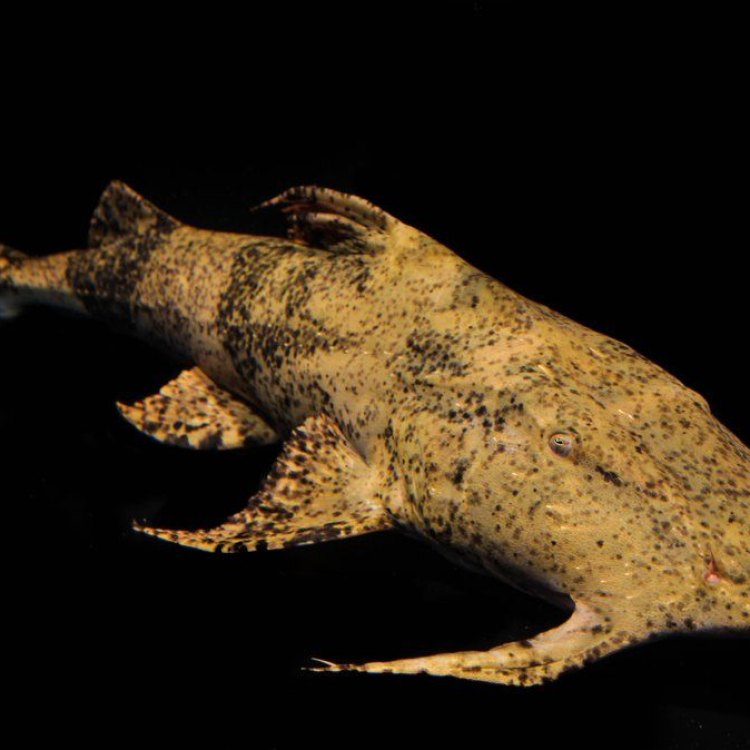
A Fearless Predator of South Asian Rivers: The Majestic Goonch Catfish
Disclaimer: The content provided is for informational purposes only. We cannot guarantee the accuracy of the information on this page 100%. All information provided here may change without prior notice.

